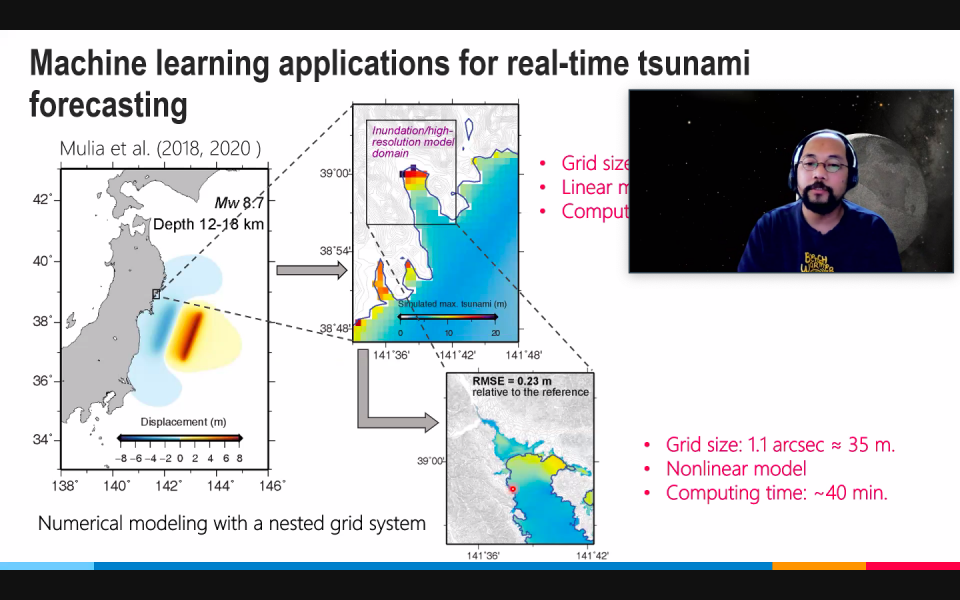Math Seminar by Dr. Iyan Mulia on April 22, 2021
On April 22, the iTHEMS Math seminar was held (Sorry for the delay of the report!).
This time, we invited Dr. Iyan Mulia from RIKEN Cluster for Pioneering Research, Prediction Science Laboratory.
The title of the talk was “Alternative tsunami observing and forecasting systems”.
The main topic of the talk was his work about how to catch and predict tsunami.
First, he proposed new approaches to construct tsunami observing systems. There exist various observing systems already, but they share a big problem that they are very expensive. Since observing systems need to be updated regularly, it is very important to reduce the cost. Iyan’s proposal is to make use of existing commercial vessels and airplanes. Since they already exist and form a dense network all over the world, it will suffice to let them observe the sea level altitude and transfer the information. Iyan and his collaborators already demonstrated in experiments that the proposed observing system is accurate enough to detect large tsunamis.
Next, he moved to another topic. Once we observe the occurrence of tsunami, next step is to predict its impact in the areas near the coast. While there are conventional mathematical models which provide very accurate prediction, it needs relatively long time for calculation. This is a non-ignorable defect because it means the delay of the warning to residents. If we use linear models instead of the accurate model, the calculation becomes much faster but the accuracy of the prediction gets low. Iyan’s proposal is plug in the Machine Learning techniques to bridge these two models. He trained neural networks to predict the results of the accurate model from the results of the linear model. This method actually gives a satisfactory result: the prediction is very accurate and fast. If this method is accepted widely, it will be possible to predict the effect of tsunami very accurately in very short time.
Reported by Hiroyasu Miyazaki

